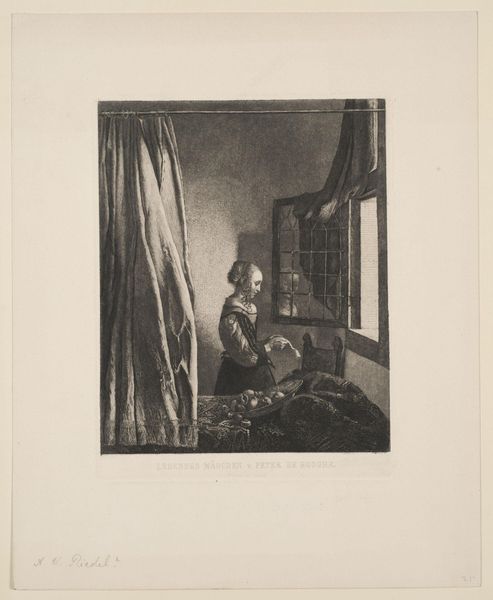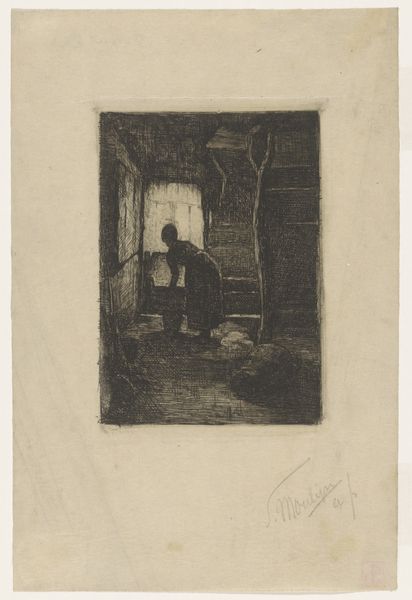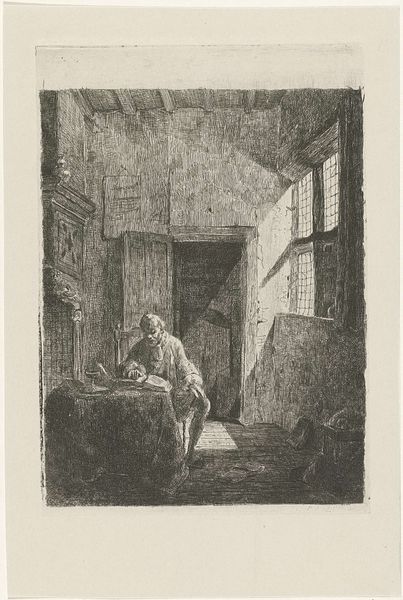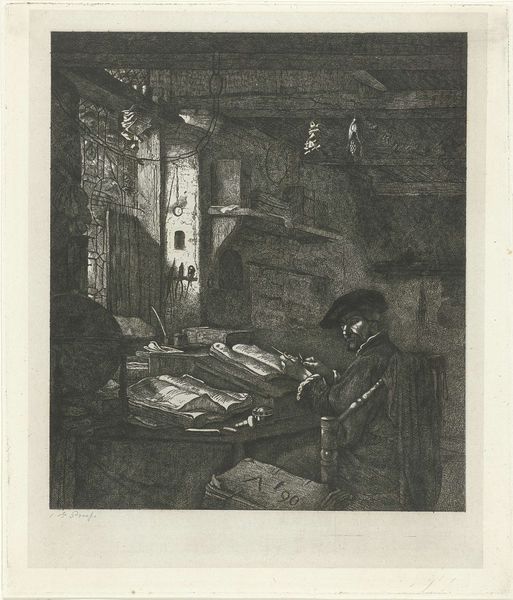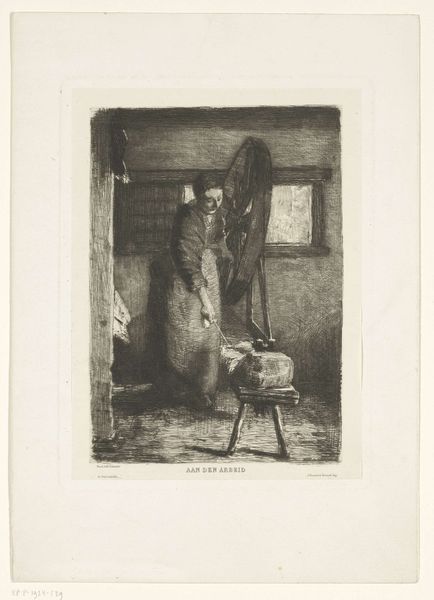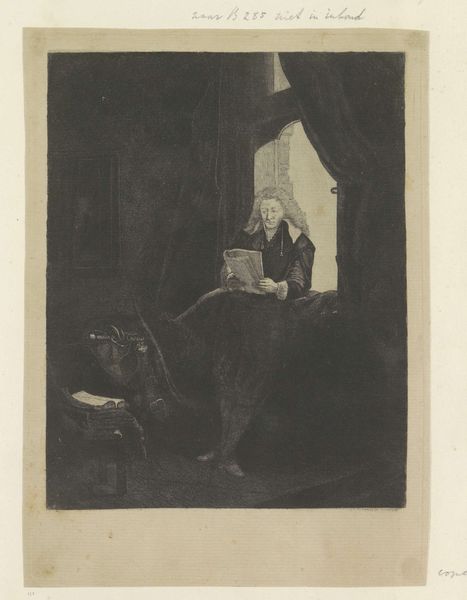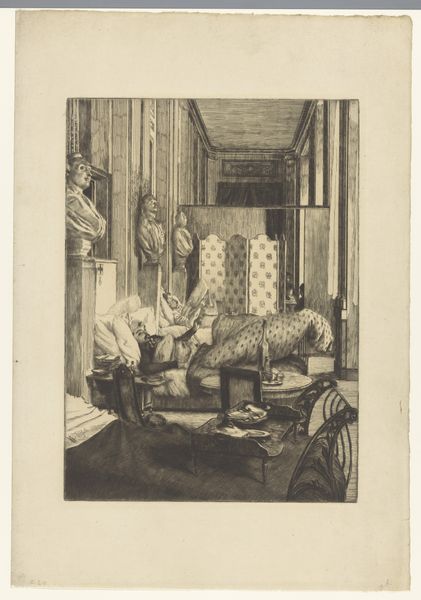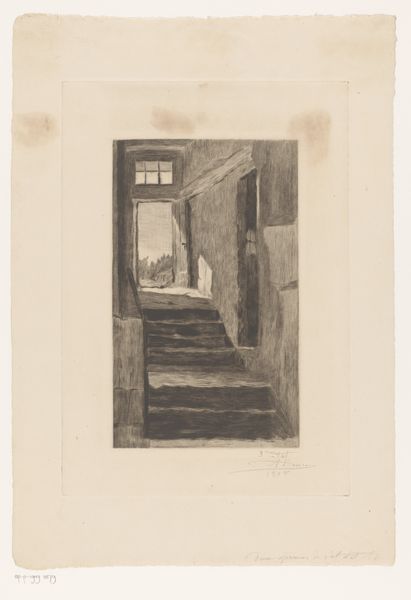
graphic-art, lithograph, print
#
graphic-art
#
lithograph
# print
#
pencil sketch
#
old engraving style
#
united-states
#
sketchbook drawing
#
realism
Dimensions: 10 11/16 x 8 3/8 in. (27.15 x 21.27 cm) (image)15 13/16 x 11 1/4 in. (40.16 x 28.58 cm) (sheet)
Copyright: No Copyright - United States
Editor: This is Wanda Gág's "Lamplight," a 1929 lithograph. It’s a rather stark scene; the light feels very deliberate, almost theatrical. What do you see in this piece, looking at it from your perspective? Curator: For me, "Lamplight" speaks volumes about the means of its creation. The lithographic process, rubbing stone, applying tusche, is all about labor. Look at how the textures are built, stroke by stroke. There's an emphasis on the handcrafted, pushing against the grain of mass-produced imagery that was becoming dominant in the 1920s. Consider the socio-economic conditions; who would be buying art prints during the depression era and what would have appealed to them? Editor: So you're saying the very *making* of it is key to understanding its impact? The physical act of creating those lines becomes part of the story? Curator: Precisely. The tools, the ink, the stone—these are all actors. Gág isn’t just depicting a scene; she's revealing the labour involved in its presentation. How is she questioning the boundary between "art" and "craft" here? She’s elevating printmaking. Also notice how the print's textures mimic the very textures of the domestic interior. Editor: That's fascinating. It does make you think about where the materials came from, who made the lamp, the table, even the paper it's printed on. It draws attention to that whole web of creation and consumption. Curator: Yes! It subtly encourages us to think about our own consumption habits, and the hands behind the things we take for granted. It also reflects Gág's own upbringing. Rooted in a working class background, do you think she may have viewed these household items very differently, than those from wealthy upbringings? Editor: That adds a whole new layer. It makes the light seem almost… defiant. I had been viewing it on the surface level as an interior scene and not considering the labour that made up that scene. Curator: Exactly. It reminds us that art is never divorced from its material origins or social context. Thank you for pointing that out to me! Editor: Thank you! I am leaving this conversation having gained a greater understanding of Gág's intent!
Comments
minneapolisinstituteofart almost 2 years ago
⋮
Wanda Gág made her own bent lampshade to produce the dramatic shadows in Lamplight. She loved the honesty of everyday objects and the associations they evoked. For her, this humble setting stood for a simpler, preindustrial time, in contrast to the blackened doorway, which suggests an unknown future. This image was first exhibited in January 1930, just a few months into the Great Depression. It became one of Gág’s most famous prints.
Join the conversation
Join millions of artists and users on Artera today and experience the ultimate creative platform.

